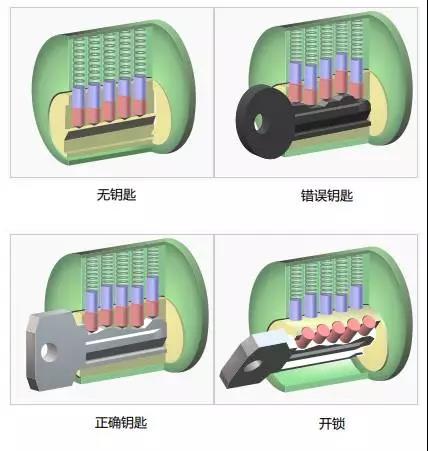
What is the mutual opening rate of locks?
Back to the new list
Almost every household has a few locks,
The lock builds a line of defense between people and the outside world.
As the public spreads about the safety of locks,
More and more people pay attention to family safety.
When I received a call from a customer recently,
I am often asked a question,
Could the lock I bought be opened by someone else's key?
Well, we often see this kind of news,
A key opens the doors of both houses.
This is the "mutual opening rate" of the lock
The anti-theft door lock core has a "mutual opening rate", that is, the probability that different anti-theft doors can open each other. The lower the mutual opening rate, the better the safety of the lock. During the test, take the specified sampling number and open the full test number. According to the corresponding national standards, the mutual opening rate of A-level locks should be ≤0.03%, and three out of 10,000 locks are the same; the mutual opening rate of B-level locks is ≤ 0.01%; the mutual opening rate of C-level locks is lower, about ≤0.0004%, that is, 4 out of a million locks are the same.
How is the mutual opening rate of locks determined?
You can first look at the structure of the most common marble lock:

There are two main factors that affect the mutual opening rate, one is the teeth on the key, and the other is the marble of the lock cylinder. Generally speaking, every lock manufacturer has a toothbrush book for the arrangement and combination of toothbrushes, which is equivalent to a code book, with thousands to tens of thousands of arrangements. In theory, it is completely sufficient. However, if the company is not well managed and put different batches of locks together, it may happen that the lock cylinders with the same tooth pattern are put together or sent to the same place. This will appear in the news that a key can open several doors. For marbles, according to national standards, the range of the marbles should be more than 0.5 mm. However, some companies are not careful or cut corners, resulting in the range of marbles being inaccurate and insufficient, and the level difference of the lock cannot be well reflected, which leads to The mutual opening rate is too high. The simpler and cheaper the lock cylinder, the more complicated the arrangement of the springs in the simple lock is limited, the combination method is also limited, and the higher the repetition rate.
Put security first, choose a high-level lock core, and observe the number and shape of the key's teeth. The more the number and the complex shape of the key, the lower the mutual opening rate of the corresponding lock, which is smooth, smooth and shallow. The tooth flower key will increase the mutual opening rate.
